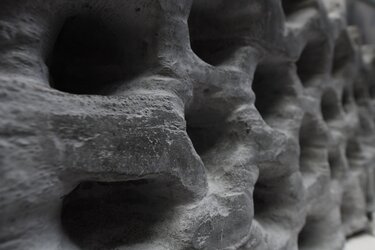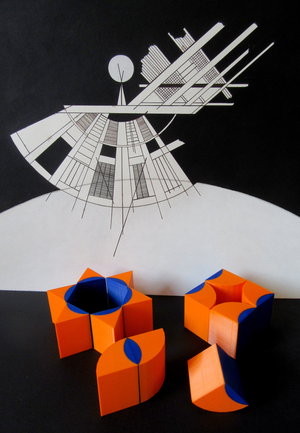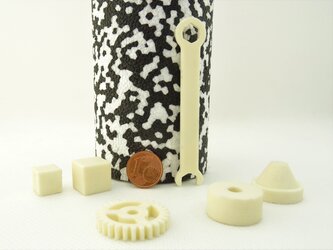

3D-printed ceramic parts made from lunar regolith
These finely-detailed ceramic parts have been 3D printed using simulated lunar regolith as part of an ESA-led investigation into how 3D printing could be used to support a lunar base.
“These parts have the finest print resolution ever achieved with objects made of regolith simulant, demonstrating a high level of print precision and widening the range of uses such items could be put to,” comments ESA materials engineer Advenit Makaya. “If one needs to print tools or machinery parts to replace broken parts on a lunar base, precision in the dimensions and shape of the printed items will be vital.
“They are the work of innovative Austrian company Lithoz, working on 3D printed ceramics.
“Normally their print process is based on materials such as aluminium oxide, zirconium oxide or silicon nitride. What we’ve demonstrated here is that it can also work with raw regolith, which is a collection of various different types of oxides, chiefly silicon oxide but also aluminium, calcium and iron oxides, among others.”
Ground and sieved down to particle size, the regolith grains are mixed with a light-reacting binding agent, laid down layer-by-layer then hardened by exposing them to light. The resulting printed part is then ‘sintered’ in an oven to bake it solid.
Johannes Homa, CEO of Lithoz added: “Thanks to our expertise in the additive manufacturing of ceramics, we were able to achieve these results very quickly. We believe there’s a huge potential in ceramic additive manufacturing for the Moon.”
As a next step, the parts will be tested to check their strength and mechanical properties, with the idea that similar parts could one day be employed to replace parts in a lunar base without requiring replacements from Earth.
This work was carried out as part of the URBAN project, supported through ESA’s Discovery and Preparation Programme.





